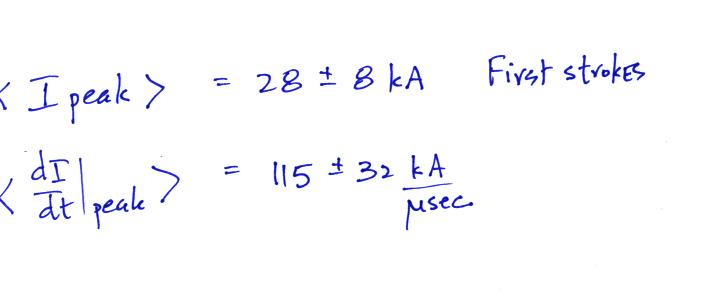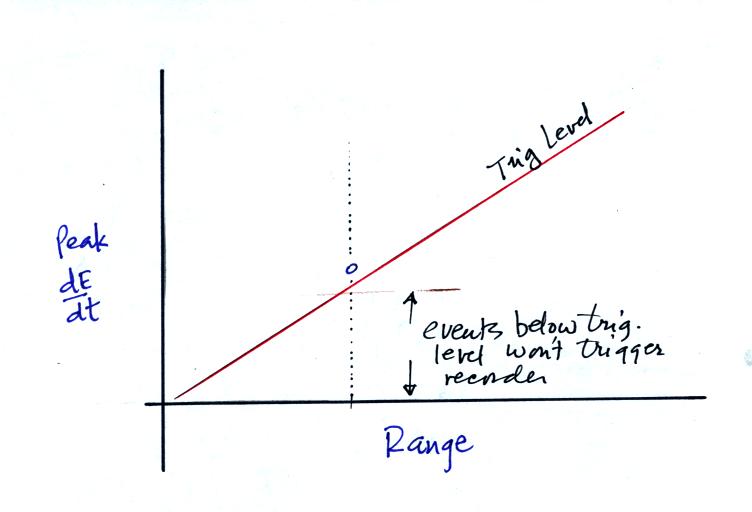Return Stroke Current Models
Estimating Return Stroke Current Parameters from Remote
Measurements of EM Fields
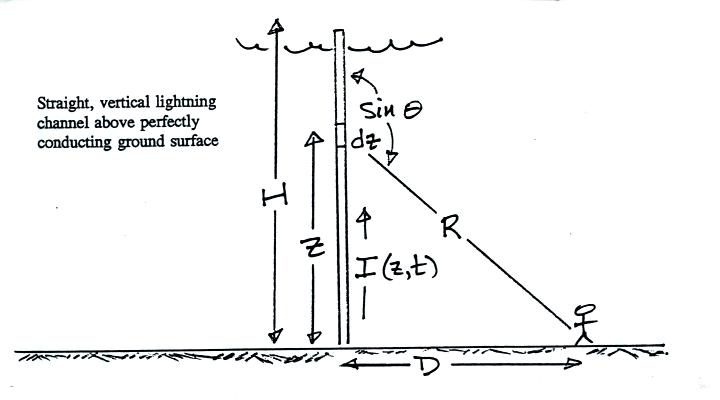
Magnetic Field
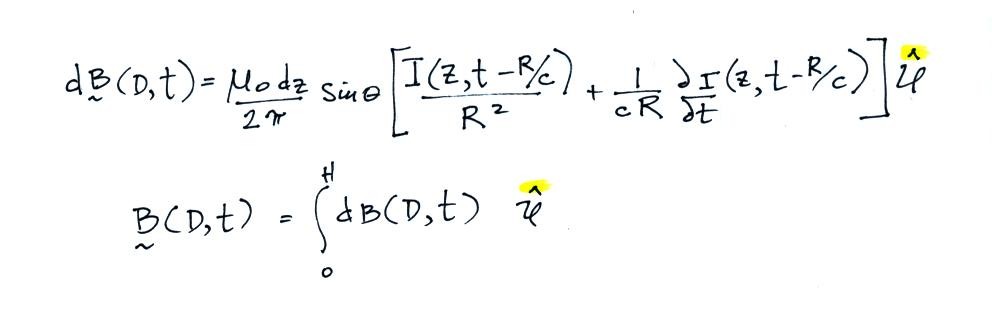
Highlighted items may be missing on the class handout
Electric Field



Representative
return stroke E field waveforms at different distances
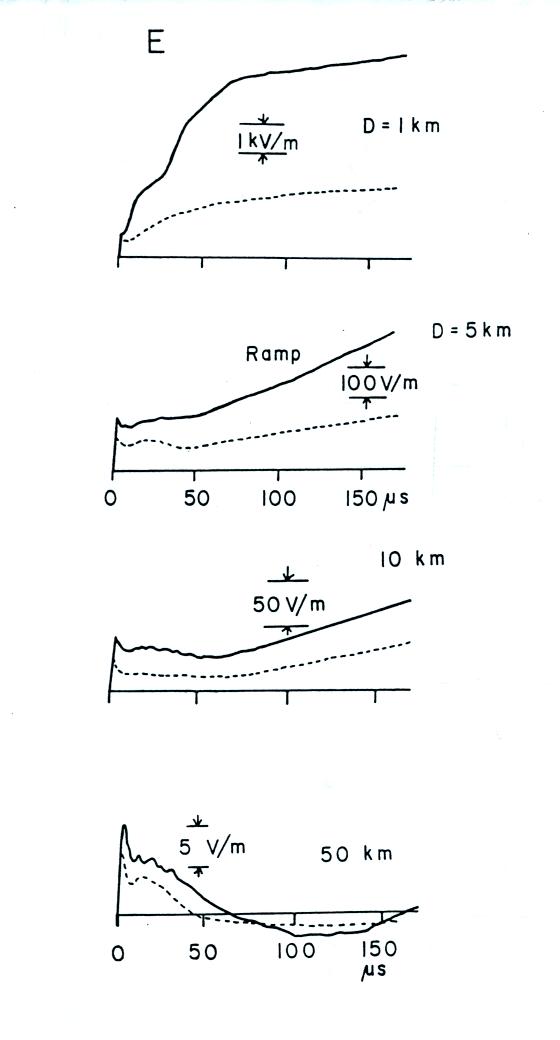
Representative
B field waveforms (B field has only radiation and induction fields)
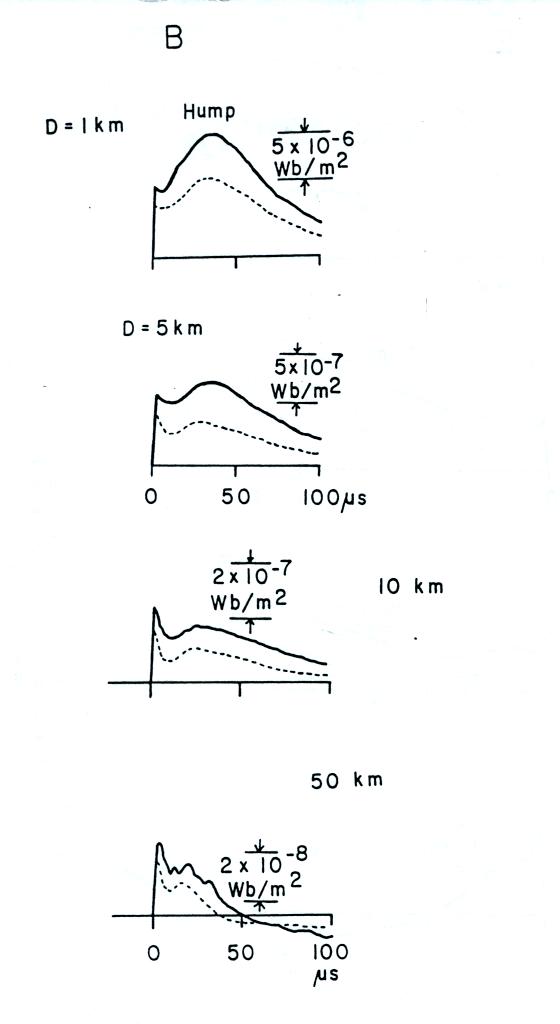
Now
we don't really know what I(z,t).
Current, I(0,t), is sometimes measured at the bottom of the
lightning channel.
A current model either tries to determine or specifies I(z,t).
(a) plasma physics models
(b) distributed R,L,C models
(c) I(z,t) is specified. Try for good agreement
between calculated and measured
fields.
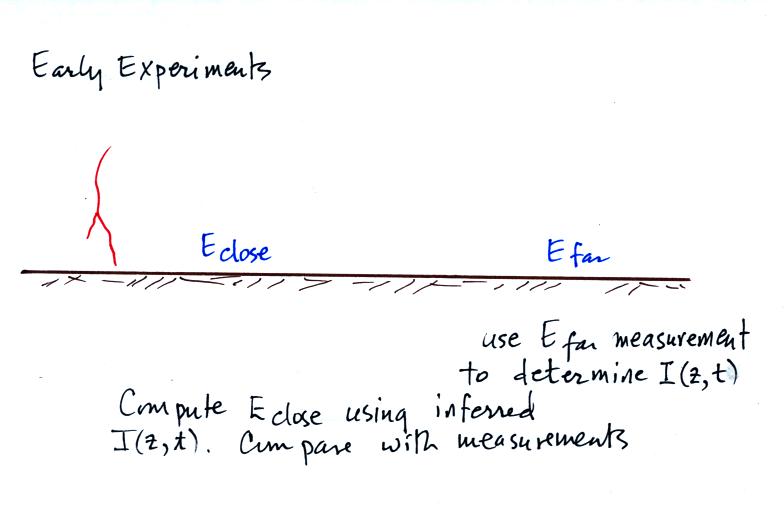
One
of the first current models was the Bruce Golde model
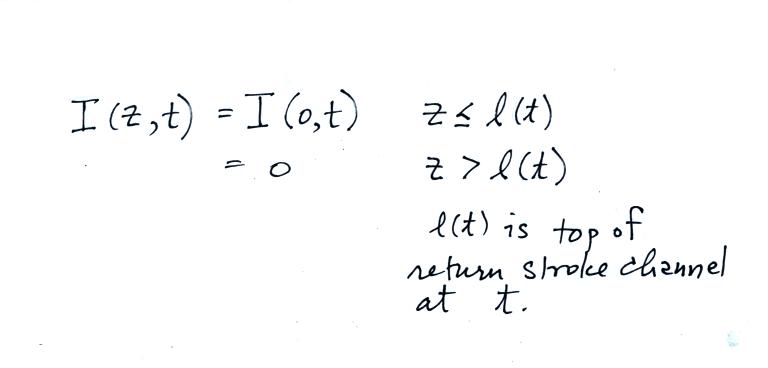
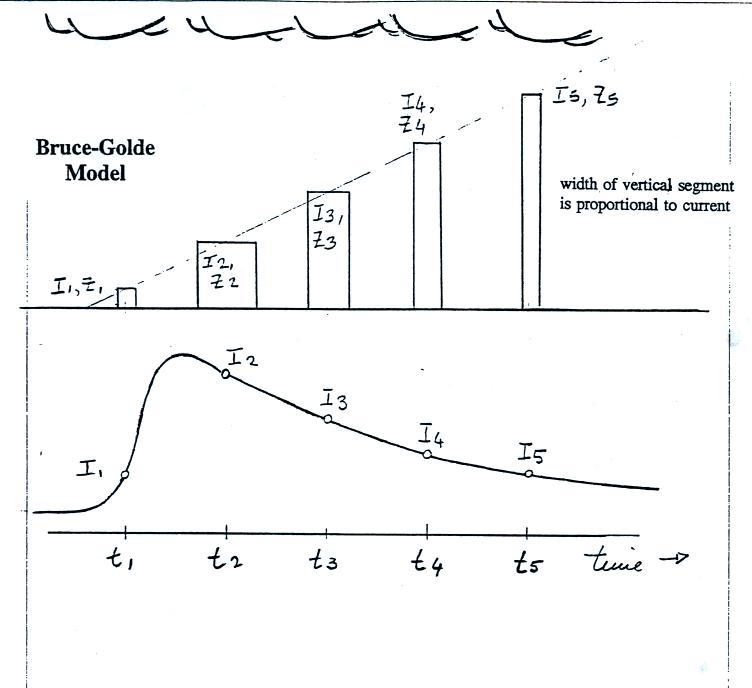
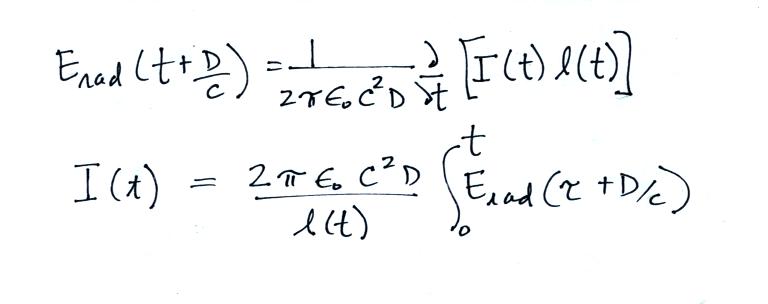
Soon
after, the Transmission Line Model was proposed

A figure will illustrate what this implies



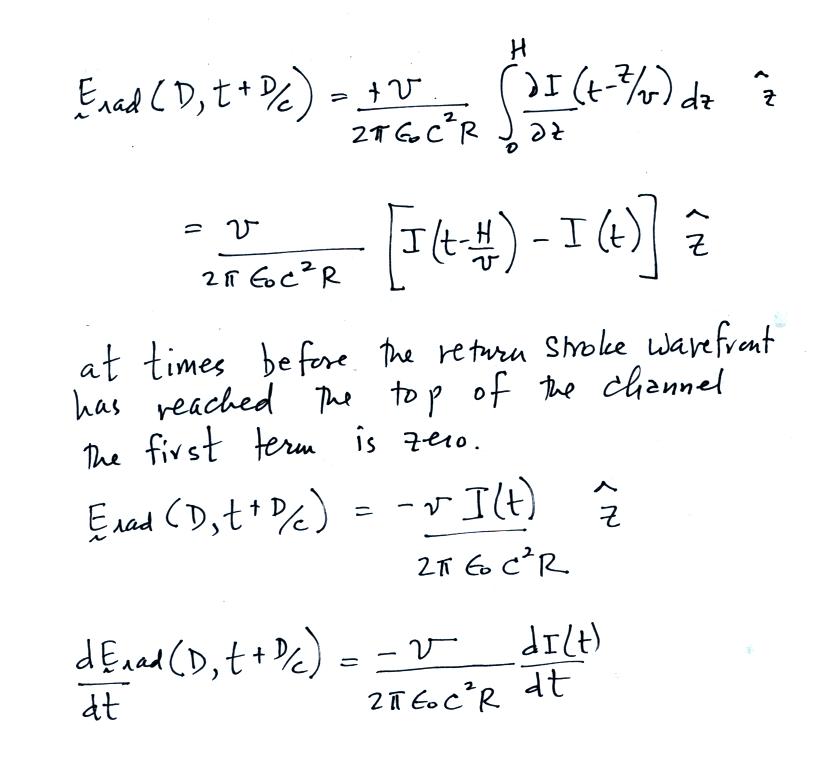
The bottom two equations are widely used to estimate peak
return stroke current (I) and current derivative (dI/dt) amplitudes
from remote field measurements.

Krider,
Leteinturier, Willett paper key points
Studied natural lightning, 25 to 45 km away, out
over the ocean (high conductivity of salt water preserves high
frequency signal content)
Recorder triggered on a 5 MHz RF signal rather than a dE/dt signal
Corrected for progagation effects
Used the transmission line equations with velocity values that provided
the best fit between measured peak E, dE/dt and peak I, dI/dt in the
rocket-triggered lightning tests.
